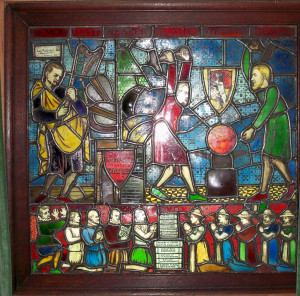The Fabians were an elite group of intellectuals who formed a semi-secret society for the purpose of bringing socialism to the world. Whereas Communists wanted to establish socialism quickly through violence and revolution, the Fabians preferred to do it slowly through propaganda and legislation. The word socialism was not to be used. Instead, they would speak of benefits for the people such as welfare, medical care, higher wages, and better working conditions. In this way, they planned to accomplish their objective without bloodshed and even without serious opposition. They scorned the Communists, not because they disliked their goals, but because they disagreed with their methods. To emphasize the importance of gradualism, they adopted the turtle as the symbol of their movement. The three most prominent leaders in the early days were Sidney and Beatrice Webb and George Bernard Shaw. A stained-glass window in the Beatrice Webb House in Surrey, England is especially enlightening. Across the top appears the last line from Omar Khayyam:
Dear love, couldst thou and I with fate conspire
To grasp this sorry scheme of things entire,
Would we not shatter it to bits, and then
Remould it nearer to the heart’s desire!
Beneath the line Remould it nearer to the heart’s desire, the mural depicts Shaw and Webb striking the earth with hammers. Across the bottom, the masses kneel in worship of a stack of books advocating the theories of socialism. Thumbing his nose at the docile masses is H.G. Wells who, after quitting the Fabians, denounced them as “the new machiavellians.” The most revealing component, however, is the Fabian crest which appears Between Shaw and Webb. It is a wolf in sheep’s clothing! 1
1 Keynes often is portrayed as having been merely a liberal. But, for his lifelong involvement with Fabians and their work, see Rose Martin, Fabian Freeway; High “ad w Socialism in the U.S.A. (Boston: Western Islands, 1966).
From ‘THE CREATURE FROM JEKYLL ISLAND’, Page 88 by G. Edward Griffin

